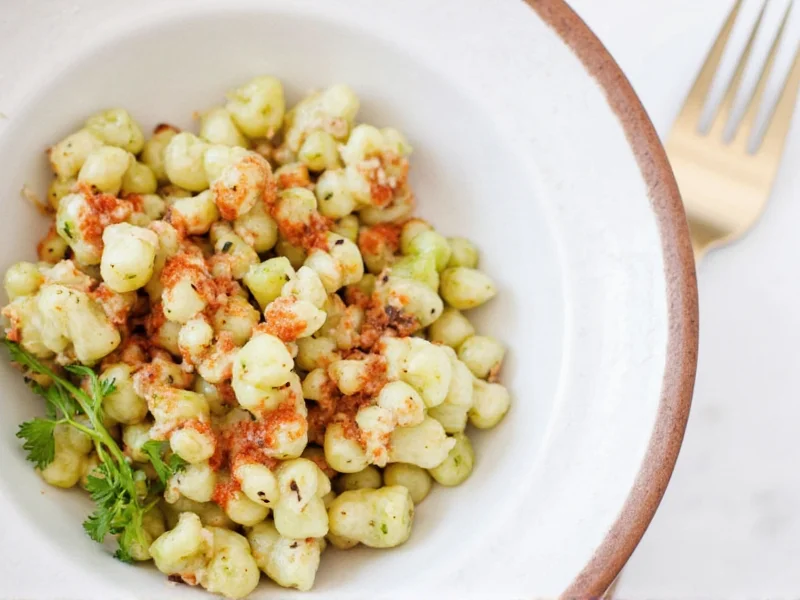When you grate or crush horseradish root, you rupture its cells, triggering a fascinating defense mechanism. This action brings together two previously separated components: the enzyme myrosinase and the glucosinolate compound sinigrin. The resulting chemical reaction produces allyl isothiocyanate (AITC), the volatile compound responsible for horseradish's distinctive pungency that primarily affects your nasal passages rather than your tongue.
The Biochemical Process Behind Horseradish Heat
Unlike chili peppers that use capsaicin to create heat, horseradish employs a completely different biochemical pathway. The sinigrin-myrosinase reaction occurs only when the plant tissue is damaged—a clever evolutionary adaptation to deter herbivores. When intact, these compounds remain safely separated in different cellular compartments. But once the root is grated, chopped, or chewed, the reaction begins immediately.
The intensity of horseradish's spiciness depends on several factors including:
- Freshness of the root (freshly prepared is hottest)
- Preparation method (finer grating increases surface area and reaction)
- pH level (more alkaline conditions increase heat)
- Temperature (warmer conditions accelerate the reaction)
- Time since preparation (heat peaks then diminishes)
How Horseradish Spiciness Differs From Chili Peppers
Understanding why horseradish is spicy but not hot like peppers requires examining how different compounds interact with our sensory receptors. While capsaicin in chili peppers activates TRPV1 receptors (creating a burning sensation on the tongue), AITC in horseradish primarily stimulates TRPA1 receptors in your nasal passages and sinuses.
| Characteristic | Horseradish (AITC) | Chili Peppers (Capsaicin) |
|---|---|---|
| Primary compound | Allyl isothiocyanate | Capsaicin |
| Sensory receptor | TRPA1 (nasal) | TRPV1 (tongue) |
| Sensation location | Nasal passages, sinuses | Tongue, mouth |
| Duration of effect | Shorter, more immediate | Longer-lasting burn |
| Water solubility | Low (oil helps) | Very low (milk helps) |
This fundamental difference explains why horseradish makes your nose run instead of burning your mouth. The volatile AITC molecules easily become airborne, traveling up the back of your throat to your nasal cavity—a phenomenon known as retronasal olfaction.
Factors That Influence Horseradish Pungency
The science behind horseradish spiciness intensity involves several variables that home cooks and food scientists can manipulate:
Preparation Techniques
Finely grating horseradish increases the surface area, accelerating the enzymatic reaction and producing more AITC. Adding vinegar immediately after grating halts the reaction, preserving a milder flavor, while waiting 5-10 minutes before acidifying creates maximum heat. This explains why freshly prepared horseradish gets hotter over time initially before the compounds eventually break down.
Environmental Influences
Horseradish grown in stressful conditions (like nutrient-poor soil or drought) typically produces more sinigrin as a defense mechanism, resulting in hotter roots. The time of harvest also matters—roots harvested in late fall after exposure to cold temperatures often have higher pungency levels.
Practical Applications of Horseradish Chemistry
Understanding what makes horseradish spicy has practical implications beyond culinary curiosity. Food manufacturers carefully control the enzymatic reaction to create consistent products. The same AITC compound that gives horseradish its kick also serves as a natural preservative and antimicrobial agent, explaining horseradish's traditional use in food preservation.
Interestingly, this biochemical defense mechanism has medical applications too. Researchers study AITC for its potential anti-cancer properties, as the same compounds that irritate our nasal passages may help eliminate harmful cells. This represents a fascinating example of how plant defense mechanisms can benefit human health.
Managing Horseradish's Potency
If you're working with fresh horseradish and wondering why is my horseradish not spicy enough, consider these science-backed tips:
- Use freshly harvested roots (older roots lose potency)
- Grate finely using a metal grater (stainless steel works best)
- Allow the grated root to sit for 3-5 minutes before adding acid
- Work in a well-ventilated area (the volatile compounds can be intense)
- Add a small amount of mustard powder (contains additional enzymes)
Conversely, if your horseradish is too spicy to handle, immediately add vinegar or lemon juice to stop the enzymatic reaction, or incorporate dairy products which can help neutralize the volatile compounds.
Why Horseradish Spiciness Fades Over Time
Unlike capsaicin which remains stable, AITC is highly volatile and breaks down relatively quickly. This explains why prepared horseradish loses its kick within days or weeks. The compound gradually evaporates and decomposes, especially when exposed to air, light, and heat. Properly stored in an airtight container in the refrigerator with vinegar, commercial horseradish can maintain acceptable potency for several months, though never matching freshly prepared.
What compound makes horseradish spicy?
Allyl isothiocyanate (AITC) is the volatile compound responsible for horseradish's spiciness. It forms when the enzyme myrosinase reacts with sinigrin after the plant's cells are damaged during grating or chopping.
Why does horseradish affect my nose more than my tongue?
Horseradish's allyl isothiocyanate primarily stimulates TRPA1 receptors in your nasal passages rather than the tongue receptors activated by capsaicin in chili peppers. The volatile compounds become airborne and travel through your throat to your nasal cavity.
How can I make horseradish spicier when preparing it?
To maximize horseradish's heat, finely grate fresh roots and allow them to sit for 3-5 minutes before adding vinegar. This gives the enzymatic reaction time to produce maximum allyl isothiocyanate. Using a metal grater and adding a pinch of mustard powder can also enhance the reaction.
Why does horseradish lose its spiciness over time?
The allyl isothiocyanate compound in horseradish is highly volatile and breaks down relatively quickly when exposed to air, light, and heat. Unlike capsaicin in chili peppers, AITC evaporates and decomposes, causing prepared horseradish to lose potency within days or weeks even when refrigerated.
Is horseradish spiciness related to chili pepper heat?
No, horseradish and chili peppers use completely different biochemical pathways to create spiciness. Horseradish produces allyl isothiocyanate which affects nasal receptors, while chili peppers contain capsaicin that activates tongue receptors. This explains why horseradish creates a nasal sensation rather than a burning mouth feeling.











 浙公网安备
33010002000092号
浙公网安备
33010002000092号 浙B2-20120091-4
浙B2-20120091-4